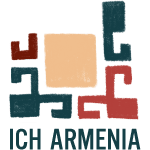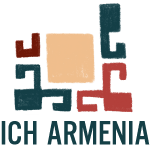
Among Armenians, Vardavar is one of the holidays with ancient roots. It reflects all the episodes of Armenian history and summer holidays: the story of Noah, the story of Hayk and Bel, the images of Anahit-Astghik, ancient Navasard holidays, Christian interpretations and the most popular performances. Tradition says that when Noah, who survived the flood, reaches the top of Masis and descends from there, the Armenian month of Navasard begins on that day. And so that the memory of the flood remains among the people unforgettable, Noah orders his sons to pour water on each other.
Vardavar coincided with the harvest of ripe grain in the fields. On the day of the feast, ears of corn were brought to the church almost everywhere, asking that the fields remain safe from hail and grasshoppers.
In Tavush, on the eve of the holiday, the girls walked around the fields all day long, picked a multi-colored and especially yellow flower called “vrtiver”, made cross bundles and secretly threw them into the yard of their relatives at night.
Bundles of wheat ears, woven with special skill, resembled the appearance of a woman. These “khachburs” were usually prepared by reapers before the start or end of the harvest in the field and served to the owner. Some researchers see in the khachbur a disguised image of Anahit, the patron deity of agricultural crops, and the hidden preservation of the cult in the everyday life of Armenians. Everyone knew the names of people who worked well in the villages.
Previously, there was a custom not to eat Vardavar apples. The first apple of the year was eaten on Vardavar, as was the first grape on the feast of the consecration of the grapes.
In the mountains, tightrope walkers gathered for Vardavar festivals, fairs and picnics were organized.
The flight of doves was one of the characteristic rituals of Vardavar.
In Agulis, up to Vardavar, betrothed girls grew wheat or barley in a bowl. On the day of the holiday, they planted a 1-meter cross in greenery and decorated it with small cucumbers, apples and roses. The decorated cross, together with greenery, was called “khundum”, and the whole rite was called “khundum tok” (in folk etymology, “give joy”).
Source: Kharatyan, “Armenian Folk Holidays”


